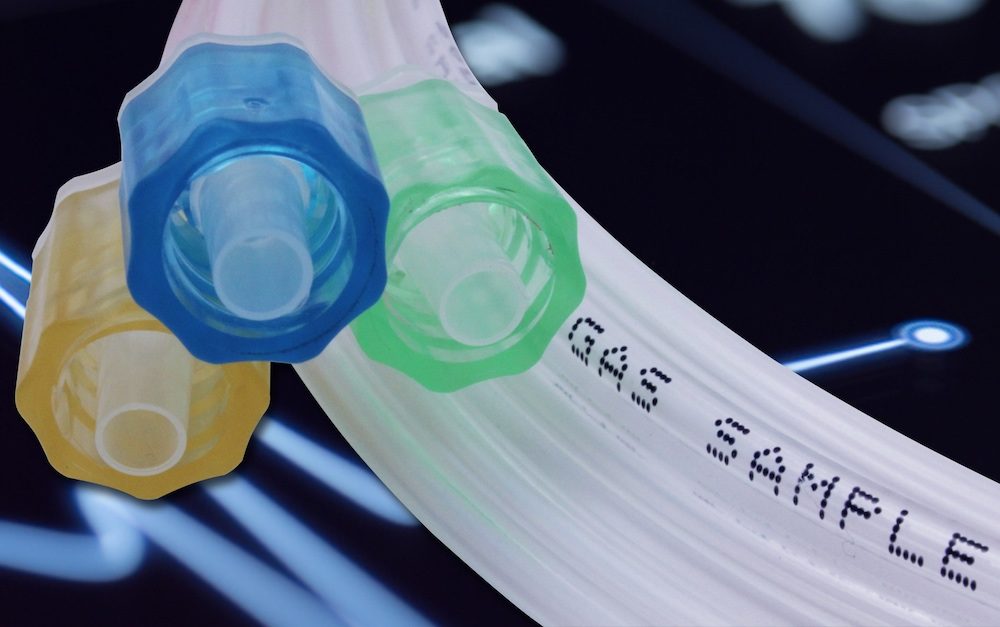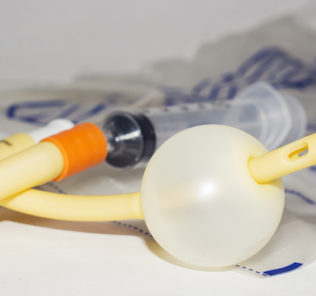Know Your Medical Tubes! A 2-Part Practical Guide for Healthcare Simulation
Environmental fidelity in Healthcare Simulation is crucial if learners are to suspend disbelief and become fully immersed in any given scenario. Creating realistic clinical situations includes adding various devices used for patient monitoring, fluid infusion, nutritional support, body fluid collection, and oxygen supply. In Part 1 of this 2 Part Series on Medical Simulation Tubing today, Dr. Kim Baily helps provides us a review of the most common types of medical tubing we will need to understand to best represent realistic patient conditions in our healthcare simulation scenarios.
New practitioners are often so focused on a single aspect of the patient’s condition that they miss significant physical abnormalities or improperly applied medical devices. Learners need to practice completing full assessments that include not only a thorough physical assessment, but also include identification of all tubes and devices attached to the patient and a thorough environmental safety assessment.
Patients have been harmed because tubes have been connected incorrectly or have become displaced. Below is a list of the most common tubes used in clinical areas.
Sponsored Content:
Intravenous (IV) Therapy Tubing
Nearly all patients have some kind of intravenous therapy which must be closely monitored. A previous article entitled Understanding IV Site Access for Healthcare Simulation, with Assessment Template provides detailed information related to IV administration and pumps. Healthcare providers completing an assessment should consider the following information related to IV therapy tubes:
- Trace each and every IV line from start to finish to make sure that the IV is connected appropriately e.g. an IV line has not been inadvertently attached to gastrostomy tube. If there are several tubes, they can be labeled to prevent confusion.
- Check that the tubing has not become dislodged.
- Check for any leakage or damage, and any blood, precipitation or air within the tubing.
- Check maintenance IV fluid/medications infusing/infusion rates/insertion site/pump status. Fluid compatibility should be checked if more than one fluid infusing into the same access site. Please see previous article.
- Check tubing expiration date – all tubes should have a label with date tubing initially hung. The labels may be color coded with date tubing is to be changed. If tubing is not labeled and could potentially be out of date, the tubing should be changed. All facilities have policies for tube changing and depending on the fluid infusing, the tubing may have to be changed daily, every 3 or 4 days or longer if the catheter is inserted into a central blood vessel.
Intravenous Tubing
Primary: Used for maintenance and large volume infusions. The tubing consists of an upper sterile spiked end which goes into an IV bag, a drip chamber where fluid flow can be visualized and drops of fluid counted if necessary and a longer lower end which is attached to the patient. In addition, roller clamps along the length of the tubing are used to control fluid infusion rate. Tubing may also have slider clamps which completely block the flow of fluid. IV tubing comes in various lengths and may or may not have a Y site where meds can be injected or piggybacked into the Y port. Primary tubing has a drip chamber which should be upright and have fluid halfway up the chamber. The size of the drop of fluid is uniform. Tubings have different size drip openings, thus size #60 (microdrip) has 60 drops per mL whereas, size # 10 has 10 drops per mL. Flow rates are calculated from the drop factor and rate of drops flowing into the drip chamber. Note this is only used when IV pumps are not available. IV tubing is connected via a catheter to either peripheral or central blood vessels. Every facility has protocols for changing IV access devices and their dressings. Learners should check these dates and dressing condition.
Sponsored Content:
Extension Set: varying length extends the length of the IV tubing. Small extension tubes may also be added directly to peripheral saline locks or central lines. These extension tubes make medication administration easier.
Secondary Sets: Typically around 36 inches or shorter in length. These tubes are inserted into piggyback fluids at the spiked end and attach either above or below a pump depending on the pump and the fluid being infusion. A common error is to leave the roller clamp closed on a piggyback bag and so the patient continues to receive the main IV but not the medication in the piggyback. Some secondary bags come with a plastic suspension device which allows the main IV to be hung at a lower level than the piggyback. When there is no pump, infusion is by gravity. By hanging the piggyback above the primary bag, the piggyback will empty first and the maintenance IV will automatically take over when the piggyback is empty.
Blood Y Tubing: This tubing, which is specifically designed for blood administration, has two spiked extensions above the drip chamber with a filter. One extension is for normal saline and the other goes into a blood bag.
IV Tubing for Pumps: When IV are to be run through pumps, the IV tubing should be compatible with the pump. Some pump IV tubing have cassettes built into the tubing which will only fit into the matching pump while others have no cassettes but fit directly into a pump. Trademarked tubing for specific pumps can be expensive.
Additional Notes for IV Tubing: IV tubing may have filters or separate filters may be attached. All IV tubing is packed in sterile wrappers. If tubing is be recycled it should be emptied, dried and repackaged with an expiration date in the future.
Additional Reading: Cancer.org has a great breakdown of tubing entitled “How Tubes and IV Lines Are Used During Cancer Treatment“, and stay tuned for Part 2 of Dr. Baily’s Tubing Guide for Healthcare Simulation!
Subscribe to Our Free Newsletter for More Great #Sim Resources!
About the Author: Today’s article was guest authored by Dr. Kim Baily PhD, MSN, RN, CNE, previous Simulation Coordinator for Los Angeles Harbor College and Director of Nursing for El Camino College. Over the past 16 years Kim has developed and implemented several college simulation programs and previously chaired the Southern California Simulation Collaborative.
Have a story to share with the global healthcare simulation community? Submit your simulation news and resources here!
Dr. Kim Baily, MSN, PhD, RN, CNE has had a passion for healthcare simulation since she pulled her first sim man out of the closet and into the light in 2002. She has been a full-time educator and director of nursing and was responsible for building and implementing two nursing simulation programs at El Camino College and Pasadena City College in Southern California. Dr. Baily is a member of both INACSL and SSH. She serves as a consultant for emerging clinical simulation programs and has previously chaired Southern California Simulation Collaborative, which supports healthcare professionals working in healthcare simulation in both hospitals and academic institutions throughout Southern California. Dr. Baily has taught a variety of nursing and medical simulation-related courses in a variety of forums, such as on-site simulation in healthcare debriefing workshops and online courses. Since retiring from full time teaching, she has written over 100 healthcare simulation educational articles for HealthySimulation.com while traveling around the country via her RV out of California.
Sponsored Content:
















